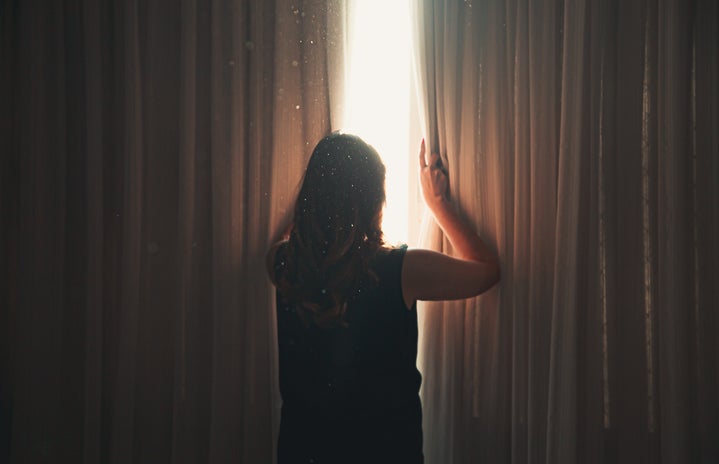Tired of getting used to time changes? You might be in luck.
I don’t know about you, but I still get confused when I open my blinds around 5:30 p.m. and behold the anticlimactic nothingness out my window in the darkness. Luckily, we might not have to deal with that annual confusion between “fall back” and “spring forward” for too much longer. Many states are passing legislation to keep daylight saving time year-round. (And yes, it’s daylight saving time instead of “savings,” even though the latter is more popular. You learn something new every day.)
For some brief historical background, daylight saving time is the practice of setting clocks an hour ahead to have more daylight in the evening hours. The US Department of Defense details that this was popularized by the Germans in World War I when they wanted to save fuel and other resources for the war effort, starting on April 30th, 1916. This started a chain reaction across the rest of Europe in countries like France, Italy and Russia, which adopted the practice mere weeks later. The United States’ first change to daylight saving time was in 1918 for World War I and became known as “War Time” to Americans. In Germany, though, it was short-lived and ended in 1919 after the war had ended. Meanwhile, DST was still spreading across the rest of the continent. Fast forwarding to WWII, Hitler brought back daylight saving time in Germany and even imposed it on occupied countries such as Poland and Denmark. The United States mandated clock changes to daylight saving time from 1942-1945 during the war to conserve fuel that would have been used in that extra hour. It was finally given set rules in 1966 with the Uniform Time Act, which established a national standard for when daylight saving time occurs in the United States. You can find this information and more on DST’s history at this site.
The Sunshine Protection Act
How does all that information above affect you besides giving your inner history buff some extra serotonin? Well, as I mentioned before, the government is working to keep daylight saving time around 365 days a year. According to Congress’ public website, the Sunshine Protection Act was introduced by Marco Rubio in March 2021 and would make daylight saving the new permanent time for the US starting November of next year. This bill passed the Senate with unanimous agreement on March 15 and is STILL being held stagnant at the House of Representatives’ desk. If the House agrees, it will be passed on to President Joe Biden, who could then sign it into law.
Marco Rubio has stated benefits about sleep and saving energy in support of this bill. Furthermore, back in 2005, daylight saving time was extended from six months to eight months in this country. “This clearly shows you where people’s preference is,” Marco Rubio stated about this after the Senate had passed the Sunshine Protection Act.
States that are Ready for the Bill
In anticipation of this bill being passed, select states have already gone through legislation that will make daylight saving time permanent once Congress gives the Sunshine Protection Act the green light.
Here are the 19 states that have jumped on the bandwagon according to NPR’s recent article, with some depending on the cooperation of neighboring states and sometimes even individual counties to successfully enact it. Keep in mind that these states can only enact permanent daylight saving time if the bill is federally approved by the rest of Congress and the president.
- Alabama
- Colorado
- Delaware
- Florida
- Georgia
- Idaho
- Kentucky
- Louisiana
- Maine
- Minnesota
- Mississippi
- Montana
- Ohio
- Oregon
- South Carolina
- Tennessee
- Utah
- Washington
- Wyoming
In 2023, daylight saving time is set to begin on March 12. Whether this is the last time we flop back and forth between “fall back” and “spring forward” is ultimately up to the House of Representatives. Yet, as an American, you still have a say in the matter.
How You Could Impact this Decision
If you are so inclined, contacting members of the House of Representatives is a right you have in this country to have your voice heard. They’re the House of Representatives after all: it’s in the name! Make sure they represent you and what you stand for, whether that’s in favor of the Sunshine Protection Act or against passing it altogether.
In Florida, for example, there are 27 representatives, so you’d find out which one to contact based on your address and what city you live in through their website. Whatever you type in is going to bring up your representative’s address for letters and their phone number if you want to call them. There’s even a way to send them an email directly through the website. According to the American Psychological Association in 2017, when contacting a representative, it is polite to keep letters to one page and only focus on one issue at a time. Refer to the bill by its formal number, which is S.623 in this case. Personalize it with why this issue matters to you. Show that you know about this representative and their past campaigns to build your own credibility.
Now that you know about how DST started and where it’s heading, the time to act is now: the bill could be rejected or passed by the House in a matter of weeks, so we need to let our representatives know how we feel about this issue before it’s too late! And let’s be honest, it’s not like you have the excuse of doing anything outside, because it’s already too dark!


